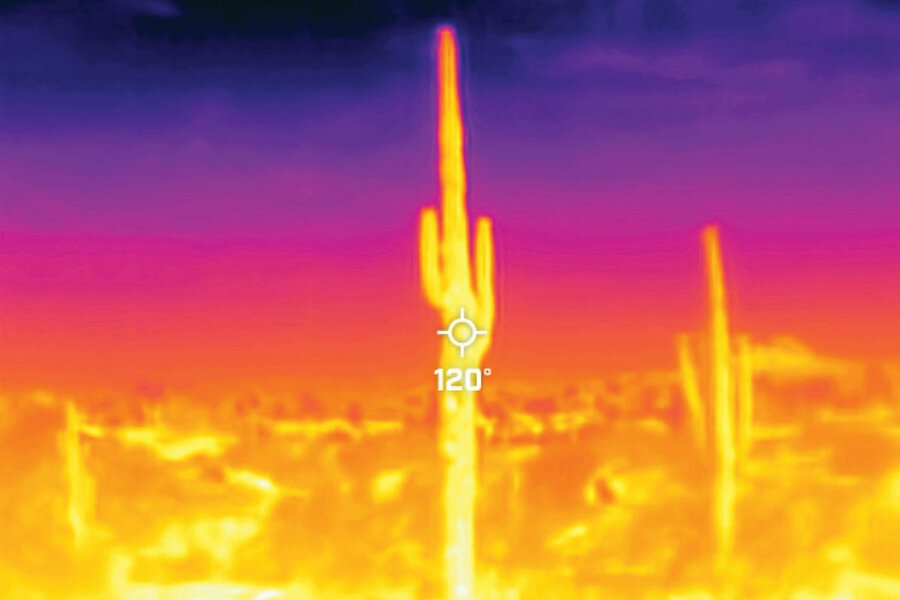How we report on a warming world
Loading...
Behind the Monitor's Sept. 4 cover story is a question: How do we address a warming world? Or, more bluntly: What does a solution look like?
The Christian Science Monitor was in many ways founded to help search for and accelerate solutions. Not by unilaterally promoting one program or policy, but rather by diving into where thought is breaking new ground – fueling the virtuous cycle that leads to new solutions.
So what does this look like with something so all-encompassing? Recently, we’ve been wondering if it would be helpful to underline the urgency by more often using the phrases “climate crisis” or “climate emergency.”
Other publications have taken such an approach, and for good reason. As scientists gain confidence in connecting the dots between devastating weather events and climate change, there has been a shift in thinking. The global conversation has gained a striking new sense of urgency.
Yet there is also the question of how newspapers best communicate information. There is no one “right” answer. Different news organizations have different lenses. This kaleidoscope of lenses enriches the landscape. Journalism must not be one size fits all.
But as part of our internal discussion, I found the comments of our senior climate reporter, Stephanie Hanes, both insightful and quintessentially Monitor. For her, the question was less about a specific phrase and more about an approach to journalism.
“I agree that the impacts of climate change will touch almost every human – dramatically and subtly – and will transform lifestyles, politics, economies, technologies, and cultures,” she told me in an email exchange. “Climate change will cause major grappling over the values that are already at the center of our coverage.”
In that way, “climate emergency” or “climate crisis” might be totally appropriate in some situations. “But I might argue that those terms tend to ‘turn up the volume’ without adding a tone of context; I suspect they don’t convince people who are doubtful, and they probably build anxiety and fear for those who already feel urgency,” she adds.
There’s also the fact that, with what we’ve already put in the atmosphere, some warming is inevitable. Is it helpful to describe a nonending situation as a crisis? Does that take away crucial nuance – removing our ability to effectively distinguish more acute and serious climate challenges?
None of these questions can be answered with a simple yes or no. And a primary purpose of Monitor coverage – given our lens – must be on where the opportunities for change lie. “I’d love to find stories that help expand readers’ creativity and sense of ‘what’s out there’ – especially those that show mindset transformations that cross expected cultural and political demographics,” Stephanie says. In other words, if solutions require a shift in thought (and they do), we should be at the forefront of that change – for climate scientists, businesses, the energy industry, and readers.
“On the ground, under the rhetoric, what ‘climate change’ means is super nuanced – even if the science isn’t,” Stephanie adds. “So how we act and respond is of course going to be super complex. ... I think the big question here is how to cover it.”






